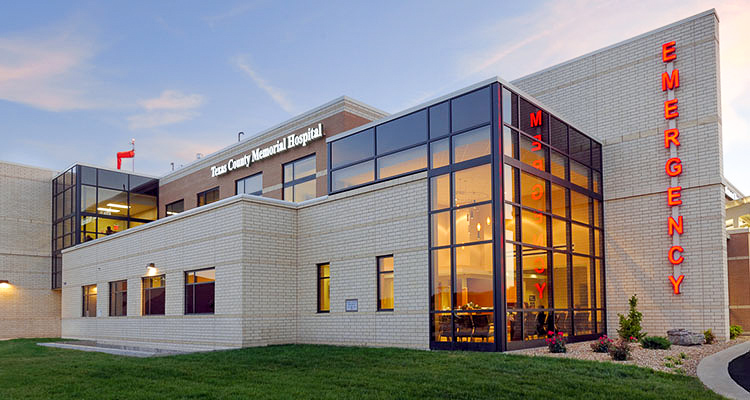
When the COVID-19 pandemic hit, staff at a 66-bed rural hospital serving five counties in southern Missouri acted swiftly to create a dedicated unit with medical personnel who only care for patients with COVID-19. A section of the second floor at Texas County Memorial Hospital (TCMH) that houses the medical-surgical unit was divided and sealed off as a designated COVID-19 unit. The dedicated COVID-19 unit and the non-infected unit each has its own air system, and no one is allowed in the COVID-19 unit without proper personal protective equipment (PPE).
“This happened within a couple days,” said Amanda Turpin, Chief Nursing Officer at TCMH. “Once we started seeing we were going to have more patients, our maintenance crews put up these barriers. They won’t necessarily stop COVID-19 from coming in but it will keep people from going in and out.”
While this handled initial containment issues, the hospital’s intensive care unit (ICU) remained on the bottom floor, which also housed some patients with COVID-19. Staff, including respiratory specialists, nurses and physicians had to don and doff PPE when treating patients on each floor. This year, after the second wave of infections erupted, Shelly Rust, ICU/Medical-Surgical Director, decided to move the ICU unit to the second floor. Two ICU beds were placed in the COVID-19 unit and two were placed in the non-infected section. More importantly, staff and medical resources were combined to better monitor and treat patients.
“We now have one ICU nurse in the COVID-19 unit and another in the non-infected unit,” Turpin said. “The rooms were built with viewing windows. Every two rooms, there is a place for a nurse to view our patients.”
In total, the second floor of the hospital houses 15 beds in the COVID-19 unit and 15 acute regular beds. The number of beds can also be flexible if they need more on one side or the other.
“Moving the ICU to the second floor next to the med-surg unit is what helped us be more efficient,” she said. “Waivers put in place by the state help us quickly move barriers to keep everyone safe. Without them, it would take at least a month to get approval and begin moving barriers.”
The move has also been better for respiratory specialists and doctors to have all their patients on the same floor, which reduces time spent getting in and out of PPE. And while it did not change the staffing ratio, having both ICU and medical-surgical staff on the same floor combined medical expertise and cut down on time going between floors.
Emotional and Physical Burnout
These moves have aided staff in being more efficient while reducing the threat of spreading COVID-19 throughout the hospital, but staff at TCMH, like in countless other medical facilities in the United States, have been challenged emotionally and physically.
“We’ve seen burnout and we try to help them,” Rust said. “Our administration appreciates us and buys meals and coffee for everyone but it’s not an easy job.”
Currently, TCMH staff are 45% vaccinated, and the administration continues to offer incentives like drawings for cash and paid time off as prizes for those who get their shots. Unfortunately, some of the greatest influencers have been seeing the effects of COVID-19 up close and, sometimes, very personal.
“With the second wave, a lot more of our employees decided to get vaccinated,” Turpin said. “We have also seen some severe cases with a few of our staff. One of our staff’s family members just passed away a couple of days ago from COVID-19, which has been difficult for everyone here.”
